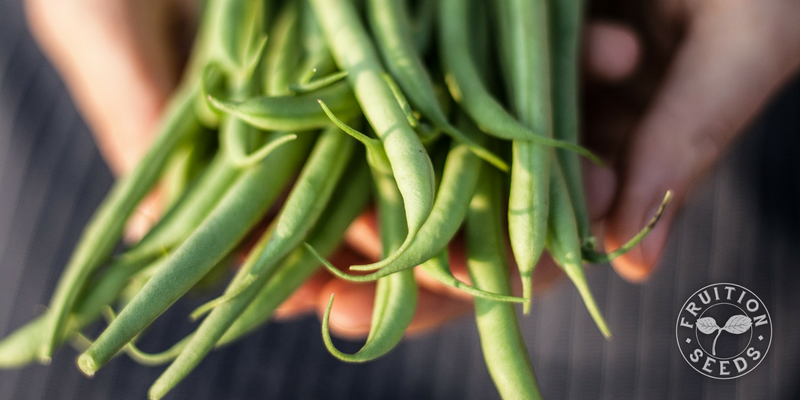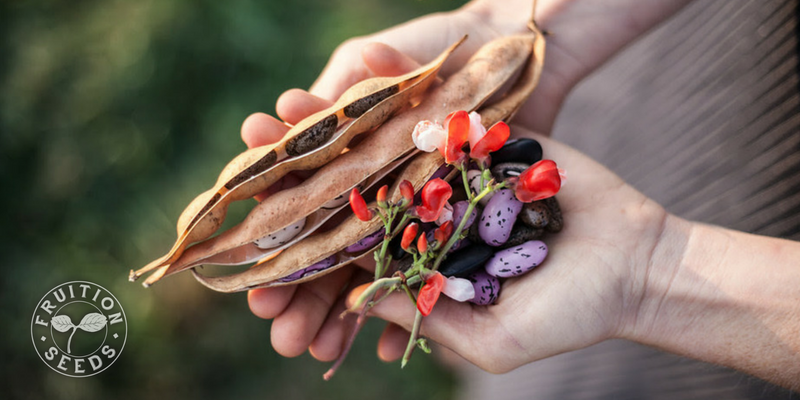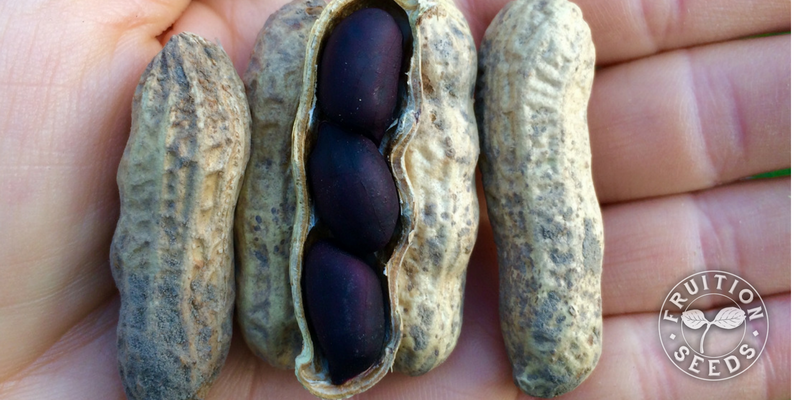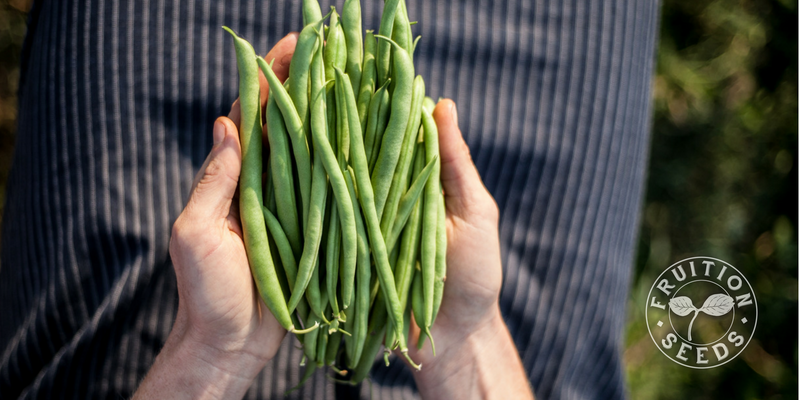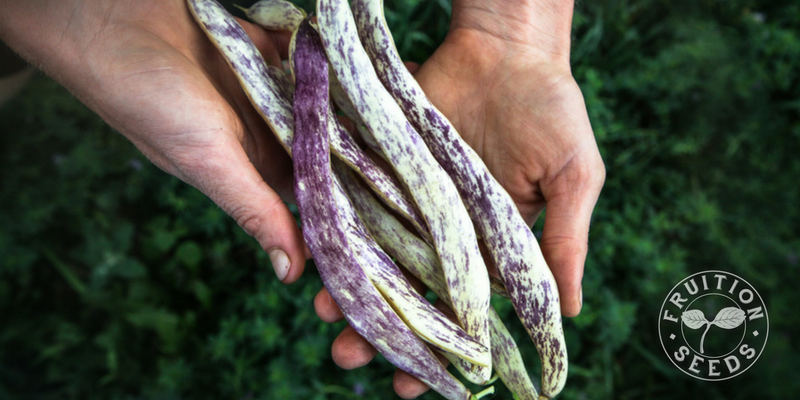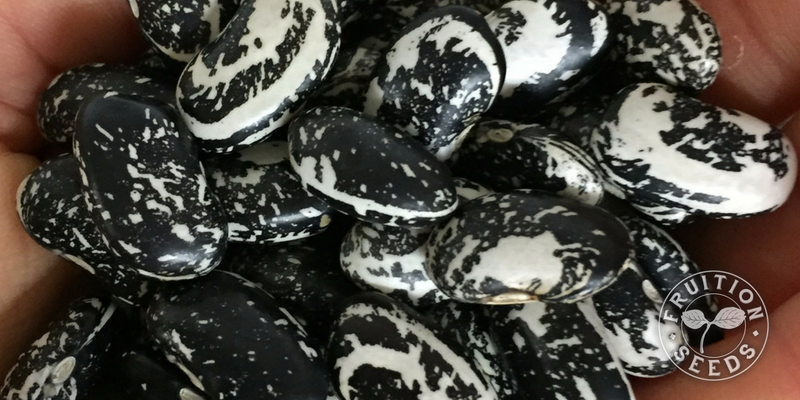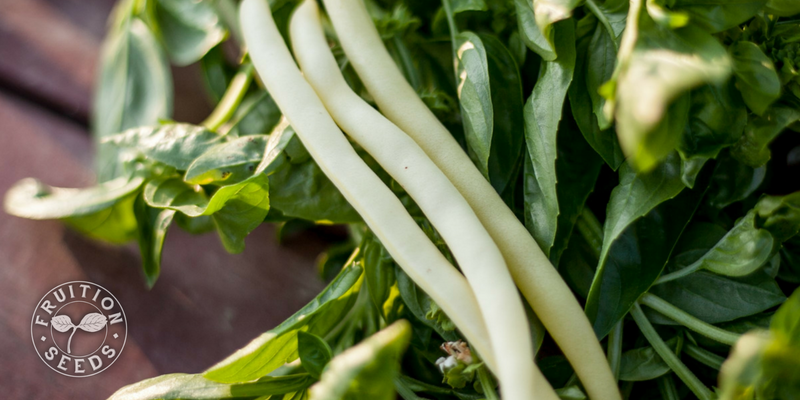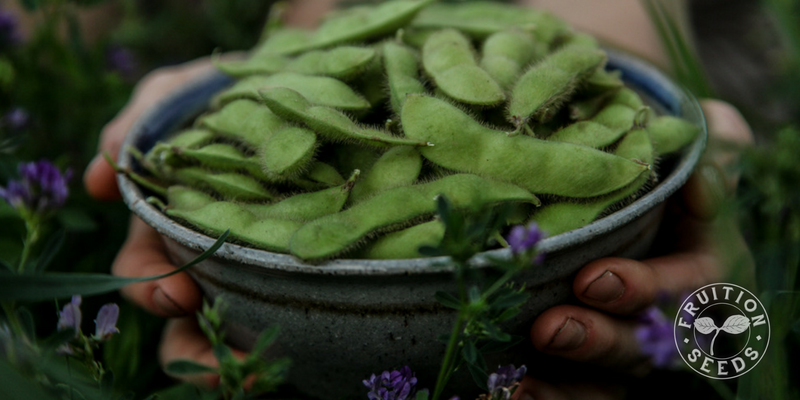In my father’s organic garden, beans were one of the first seeds I sowed on my own. Large and undaunted by imperfect planting depth, beans are also more tolerant than most of the imprecise spacing of tiny, eager fingers, as were mine. I’ll always be grateful for my father, his garden, the bold responsibility he gave me and those seeds that grew my love of organic food, cultivation and community.
Haricot vert or French filet-style beans like ‘Tavera‘ are my favorite.
Sow beans in warm soil after frost. Here in Zone 5, that is often late May to early June. Pole beans we sow just once and harvest all season as they blossom and fruit up into the sky; bush beans we sow every 3-4 weeks to harvest sweet, tender beans at their peak til frost comes. Our final succession is generally in mid-July, though sometimes we squeeze an early variety in at the end of July, like Tavera, and hope for the best.
You’ll find Tavera and dozens of other organic bean seeds for short seasons here!
As you plant beans this season, here are five tips to help you reap what you sow:
1. Direct Sow Only
Beans absolutely despise being transplanted. Quickly stunted roots will resist rapid, healthy growth for the rest of their lives, significantly reducing your harvest. Sow beans an inch deep in fertile, well-drained soil. Able to fix their own nitrogen, beans thrive in a broader range of soils than broccoli, tomato and other ‘heavy feeders.’
Chocolate Runner Beans are gorgeous as seeds, plants, flowers and pods.
2. Timing is Everything
Beans thrive in the warmth of summer. Sow your beans directly in the ground no earlier than last frost. Here in the Finger Lakes, Zone 5, we typically sow our first succession of beans on Memorial Day. Sow beans in rows, one seed every four to six inches, thinning once true leaves emerge, leaving about six inches between plants. Leave at least one foot between rows. Pole beans you’ll plant just once; bush beans may be sown every 3 weeks through mid-July for a constant harvest throughout the season.
3. Interplanting is Genius
We are constantly experimenting, growing plants in proximity, curious to see which ones thrive and why. One of the easiest interplantings is to sow baby leaves alongside your beans.
Between rows of bush beans, with one foot between rows, there is a lot of empty space that isn’t feeding you, that will also be growing weeds. Between those rows, sow quick-growing herbs like dill, cilantro, basil and greens like lettuce, arugula, asian spinach, kale or any other leaf that you’ll love to harvest as baby leaves in three weeks. Though these are classic cut-and-come-again crops, you’ll only harvest them once before the canopy of your bush beans outcompetes all their light. It is so, so worth it.
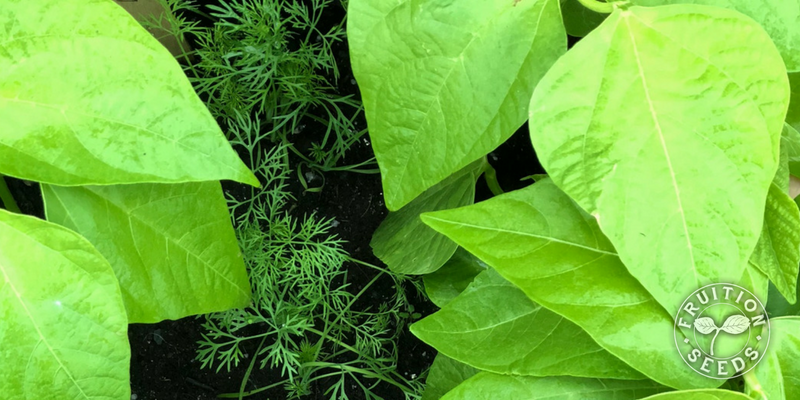
Baby herbs + bush beans = genius interplanting. See our video at the top!
You can also sow & enjoy these baby greens with pole beans:With even more sun filtering through the foliage, you often can often harvest two to three cuttings of baby greens.
4. Marvelous Microorganisms: Inoculant is Awesome
In the garden, ‘inoculant’ is a microbe-rich powder full of nitrogen-fixing bacteria that form symbiotic relationships with your beans, peas and other legumes, increasing their health and yield significantly.
If you’re planting legumes in a place that may not have grown legumes for a decade or more, definitely consider dusting your seeds with inoculant as you sow them. If legumes have grown there more recently, you likely have an abundance of symbiotic bacteria still residing in your soil. We always add a touch of inoculant, just in case.
Legumes love inoculant, including peanuts, peas, beans and so much more.
5. Celebrate Diversity
There is a bean for every style, every taste, every climate, every kitchen. Here are the broad contours of the world of beans and a few musings on why we love them:
Bush vs Pole
Bush beans are one of the easiest vegetables to grow, only getting about two feet tall. Pole beans are also easy, though they require solid six foot (or taller) trellising, which corn and sunflowers can provide as easily as wire or wood.
In terms of harvest, you can expect a similar quantity from both. Here’s the difference: The bush bean will bear their abundance in a few concentrated weeks while the pole bean will offer abundance throughout the season. If you’re making dilly beans or putting away serious beans for the freezer, you want the harvest all at once. You want bush beans, for sure.
An abundant and easy to grow bush bean, ‘Provider‘ is our go-to for freezing and dilly beans.
Color
You’ll find snap beans in all shades of green, purple, yellow and the occasional red hue with countless variations. We love Sequoia for it’s rich velvet color and Dragon Tongue for it’s cream-purple swirls. Alas, the purple anthocyanins are water soluble, so they will turn green when cooked. Yellow means, however, remain yellow!
Dragon Tongue is a sweet and succulent bush romano-style bean.
Dry beans come in a much wider spectrum, spanning a nearly full rainbow. Chocolate Runner is our all-time favorite for it’s breathtaking beauty; Haudensaunee Skunk bean has an amazing history and is endlessly beautiful, as well.
Haudenosaunee Skunk is a pole dry bean that has been saved in the Finger Lakes for well over a millenia by our indigenous people.
Uncle Willie’s is our favorite shelling bean, also with a great story, and it’s rose stripes delight us each season. Shelling beans braised with stock and thyme is one of our favorite late-summer suppers.
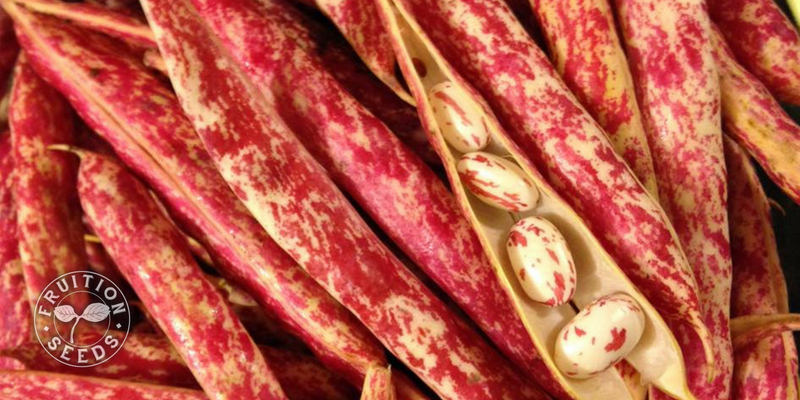
Uncle Willie’s is my favorite shell bean, a gift from an old-timer in Maine in 2003.
Shape & Flavor
Classic beans, including yellow ‘wax’ beans like Gold Rush, are cylindrical and have a ‘string,’ with a wide diversity of flavors and textures. Wax beans are often our favorite, with their extra crisp sweetness. The French filet or haricot vert style bean, like Tavera, is more short and slender by comparison as well as stringless, not to mention with more refined (less ‘beany’) flavor.
‘Gold Rush‘ is an exquisitely sweet bush bean with pods much easier see compared to their green neighbors.
Romano or Italian flat beans like Supermarconi are wider than classic beans, resulting in greater succulence. Romanos are characteristically more nutty in flavor, as well. Edamame is a soybean harvested green, just as the pods are beginning to plump. Their window to harvest or optimum flavor and texture is about ten days and 80% of the pods mature in tandem, so you’ve got time but not too much.
Edamame is easy to grow. We try to tuck at least 20 quarts of them, blanched and frozen, in our freezer each season.
Yard-long beans are typically pole beans, with long pods easily reaching over one foot. Generally a touch more fibrous, cooked yard-longs are typically more crisp and satisfying roasted or in a stir-fry than classic string beans. Many have a slight asparagus flavor, as well.
Explore! Experiment! Share what you learn! Save a few seeds!
We are so grateful to share our bounty with you
Sow Seeds & Sing Songs,

and the Many Beings of Fruition

